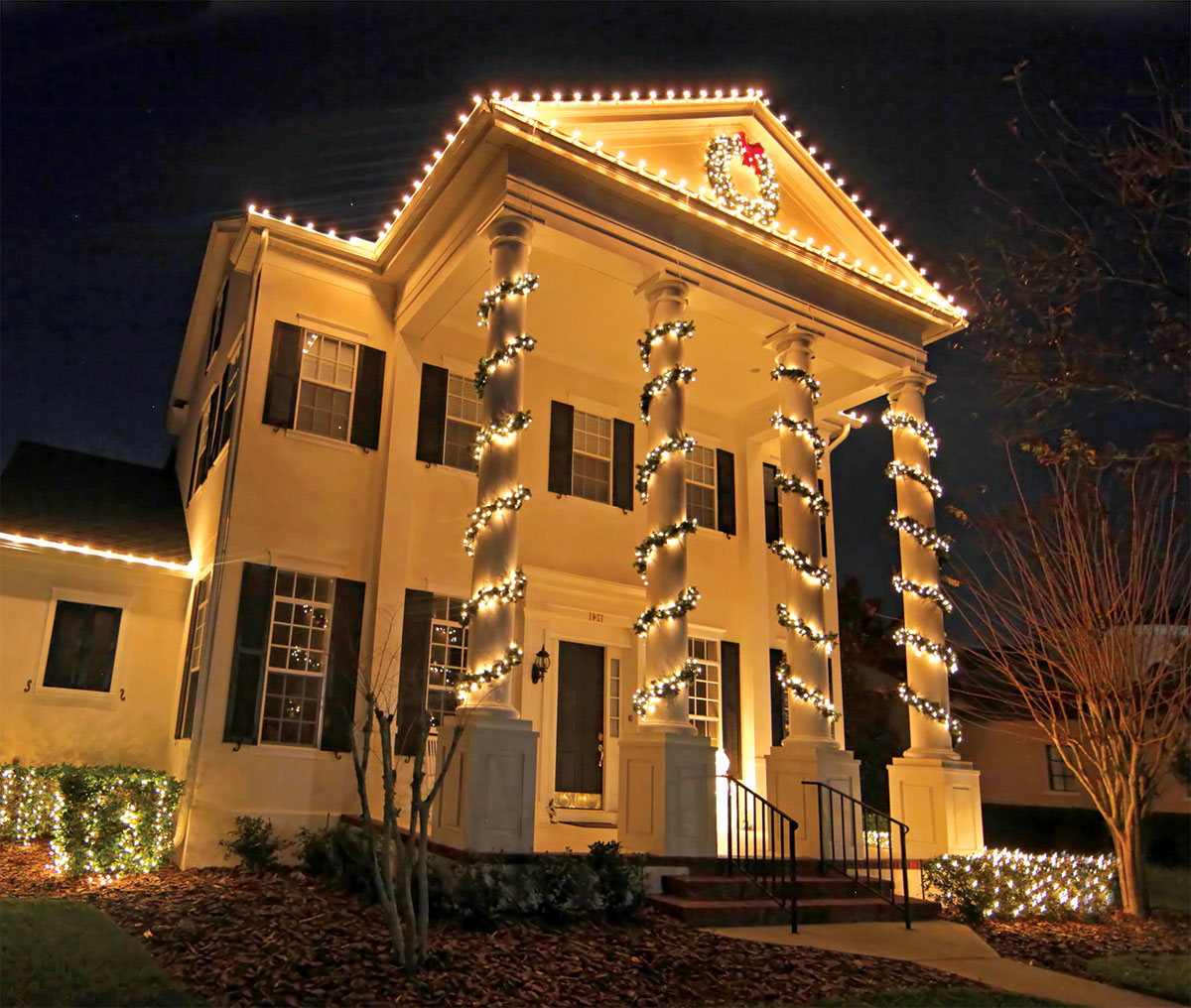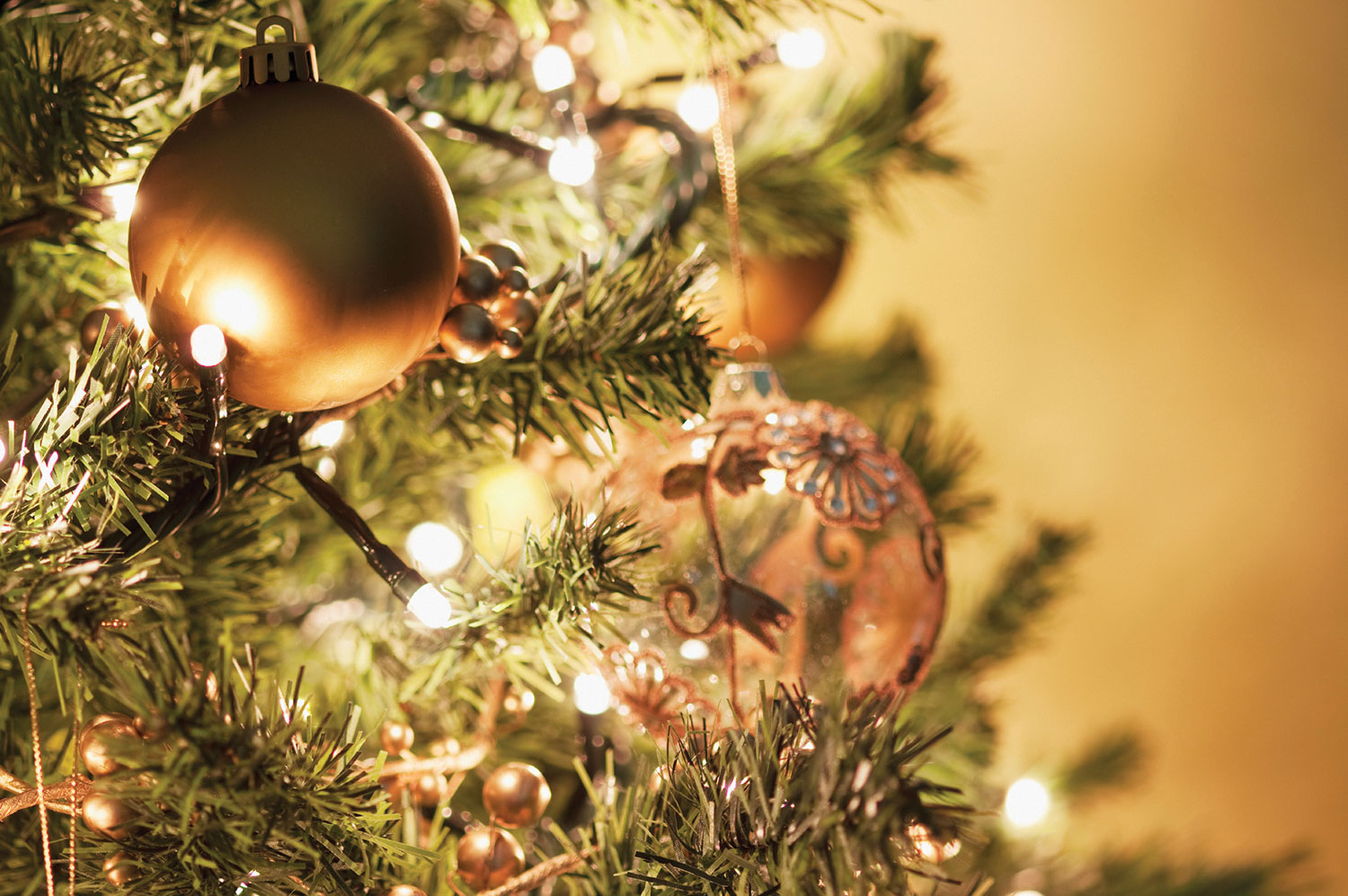We are nearing that time of year again when the temperature drops, leaves change color, and holiday lights begin snaking a path around our home. That’s right; there’s just something about fall and the holiday season that gets us excited about light displays and puts us in a festive spirit. Yet, whether it’s a single strand of twinkling lights coiled around an apartment railing or a more complex programmed controller that syncs light displays to the season’s hottest songs, we still need to raise awareness about safety related to these temporary lighting displays.
With the advent of LED lights, we have come a long way from the days when Clark W. Griswald’s 25,000 incandescent Christmas light display required the power company to switch on the auxiliary nuclear reactor! However, while energy consumption has come way down, the fact remains that these displays still involve hanging lights all over houses, in trees, and on the lawn. Extension cords are also often utilized in unintended ways and can be found tucked into the siding to keep them hidden.
Remember, the purpose of NFPA 70, National Electrical Code® (NEC®) is to safeguard people and property from hazards resulting from the use of electricity. Even while these displays are only temporary, the NEC still has requirements for how to install them. First, we need to understand the structure of the NEC to understand how the rules apply. At first glance, one might think that since holiday lighting displays are seasonal, the only part of the NEC that applies is Article 590 for temporary installations. However, we need to remember that Chapter 5 articles are not stand-alone parts of the code; they are permitted to provide additional requirements or make modifications to the requirements already in place in Chapters 1 – 4. This means that Article 590 is only going to amend or add to the requirements of any other article that covers a part of the holiday lighting display. For example, temporary lighting displays usually involve extension cords. Normally, extension cords are covered under Article 400 for flexible cords and flexible cables. Normally, they are not permitted to be installed as a substitute for the fixed wiring of a building. This means that we aren’t going to be strapping flexible cords down to a building. However, section 590.4(J) permits flexible cords to be supported in a manner that protects them from damage and essentially allows them to be used as a temporary part of the building’s wiring.
Another important requirement to keep in mind is that temporary holiday lighting is only permitted to be installed for a period of 90 days. Because so much liberty is taken when installing temporary decorative lighting displays, it is important not to leave them hanging around for too long. They are not intended to be installed as permanent fixtures. Section 590.5 requires that decorative lighting be listed and shall have a label on the product. Decorative lighting strings are evaluated in accordance with the requirements described in UL/ANSI 588, the Standard for Safety of Seasonal and Holiday Decorative Lighting. This ensures that products have been evaluated for fire, shock, and other types of hazards. As long as the product is installed and used in accordance with how it is intended, the risk of injuries is reduced. But when it comes to decorative lighting, however, consumer misuse or consumer use of unlisted equipment still leads to major problems every year.
Another issue that’s worth considering refers to lights in vegetation around the yard. In general, the NEC prohibits using vegetation to support electrical equipment and conductors. This is because the vegetation is not a stable platform. Trees blow in the wind, bushes grow and expand, and all the while, they are made up of combustible material. Over time, all this movement and shifting can damage conductors and create a fire or shock hazard. Especially if the vegetation becomes dried out like during a drought. So, because temporary lighting is limited to a time constraint of 90 days, the risk of injury to people and property damage from being lights installed in vegetation is lowered to a more acceptable level. Article 590 grants this permission with an important caveat: trees can be used to support overhead spans of branch circuit conductors and cables provided that they are utilizing some form of protection from the natural movement of live vegetation. This could include strain relief or tension take-up devices or other approved means to prevent the wiring from being damaged.
Of course, these requirements only matter when the NEC is followed. Not many jurisdictions require an inspection before a homeowner can light up the neighborhood with their own rendition of a holiday light show set to the Trans-Siberian Orchestra. This makes it even more difficult to ensure that this equipment is used in a way that the manufacturer had intended. After all, it isn’t like the NEC is common knowledge among the general public. So, as electrical professionals, our duty is to help spread the word about just how much of a hazard these temporary decorative lighting displays can be if the rules are ignored. Again, one of the biggest requirements we must adhere to is the 90-day time constraint rule, as the equipment is not intended for long term use. The longer lights stay up; the more likely these lights will become damaged, leading to fire and shock hazards.
Decorative holiday displays have been around since before we had electricity in our homes. By spreading awareness about the important parts of the NEC, we can limit the amount of misuse of this equipment and lessen problems caused by decorative lights. According to NFPA research, between 2013-2017, there was an average of about 780 fires each year that started with this type of equipment. The data tells us that we still have a long way to go in reducing the danger that holiday lighting presents. Continued enforcement and knowledge of proper installations can help stem the tide. NFPA continues to spread the message that we need to be careful when using holiday lighting on our home, around vegetation, and with combustible materials in the home. As electrical professionals, we need your help to spread the message so that we can protect more lives and property. Remember, it’s a big world, let’s protect it together!
Want to learn more? You can find the latest electrical news, research, and information by subscribing to NFPA’s newsletter, NFPA Network.











Find Us on Socials